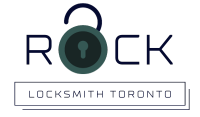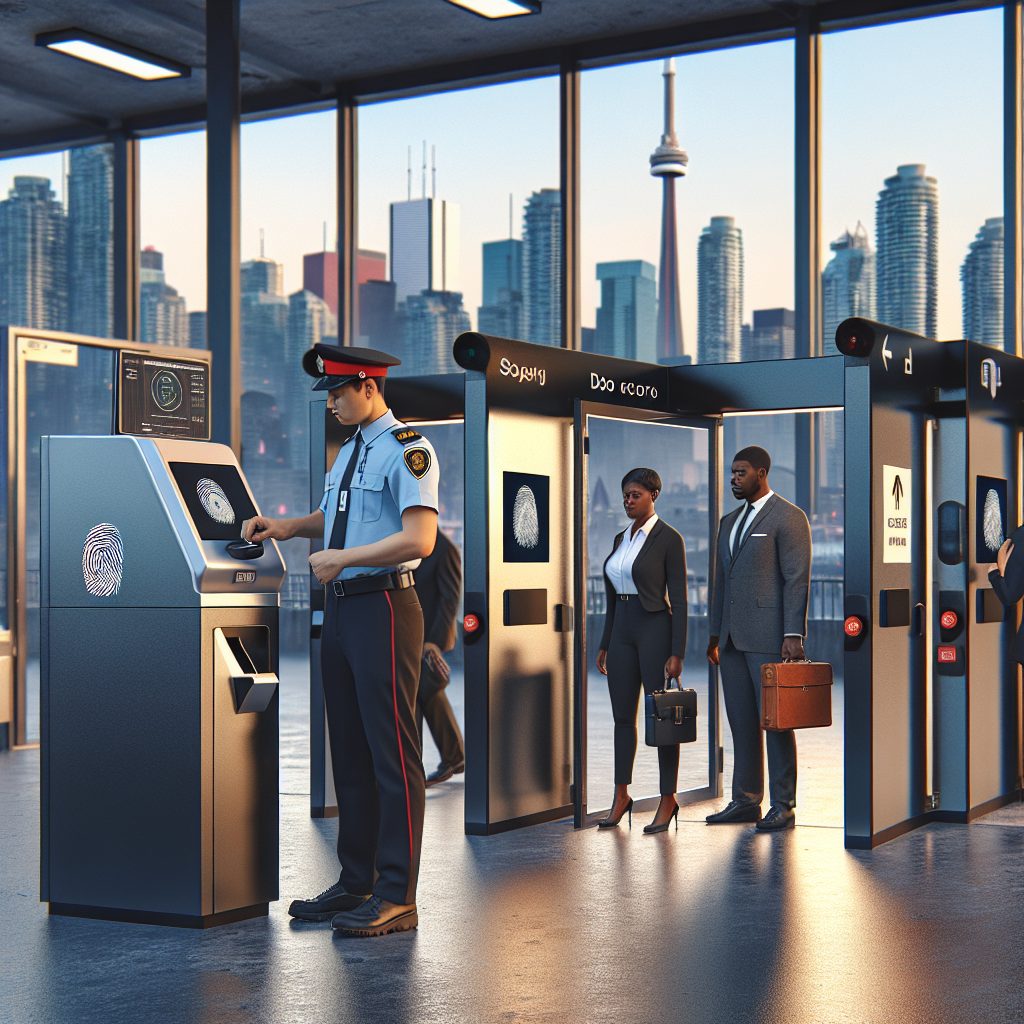Electronic access control refers to a modern system that enables the restriction of access to certain areas or resources within a building or facility by using electronic devices, such as keycards, fingerprint scanners, or facial recognition technology. With the advancements in technology, electronic access control has become an essential solution for businesses and organizations in Toronto.
In today’s fast-paced world, traditional lock and key methods are no longer sufficient to ensure security and restrict access effectively. Electronic access control systems offer a wide range of benefits and unique features that enhance security measures and provide convenience. For instance, these systems can track and monitor entry and exit activity, ensuring that only authorized individuals are granted access. Additionally, electronic access control allows for easy and efficient management of multiple access points, enabling administrators to grant or revoke access permissions quickly and remotely. This level of control and flexibility provides a higher level of security while also streamlining administrative tasks.
Moving forward, this article will delve deeper into the key takeaways of electronic access control systems in Toronto. We will explore the various types of access control technologies available, their specific applications, and how businesses can benefit from implementing these solutions. Additionally, we will discuss potential challenges and considerations when adopting electronic access control systems, along with best practices to ensure a seamless and efficient implementation process. So, let’s navigate through the world of electronic access control and discover how it can revolutionize security measures for businesses in Toronto.
Key Takeaways
1. Electronic access control systems are growing in popularity in Toronto due to their enhanced security features and convenience. These systems allow authorized individuals to enter a premises through various methods such as key cards, biometric data, or smartphone apps, reducing the reliance on traditional keys and locks.
2. The advancements in technology have resulted in more sophisticated access control systems that offer multiple layers of security. This includes features like facial recognition, fingerprint scanning, and two-factor authentication, providing businesses with a higher level of protection against unauthorized access.
3. Electronic access control systems also offer data analytics capabilities, allowing businesses to monitor and track access activity in real-time. This data can help identify patterns, identify potential security risks, and improve overall operational efficiency. Additionally, remote access control management enables businesses to easily add or remove access privileges for employees or visitors, saving time and resources.
4. The integration of electronic access control systems with other security systems, such as video surveillance, alarm systems, and intercoms, further enhances the overall security of a premises. This integration provides businesses with a comprehensive security solution that can be monitored and managed from a centralized location.
5. Despite the initial cost of installing electronic access control systems, businesses in Toronto are finding long-term cost savings. With the ability to easily manage access privileges and eliminate the need for rekeying locks, businesses can reduce the expenses associated with lost or stolen keys. Additionally, electronically recorded access activity can help resolve disputes and deter internal theft, saving businesses money in the long run.
The Importance of Electronic Access Control
Electronic access control systems have become a crucial aspect of security in Toronto. With the increasing need for a secure and efficient access management system, organizations are adopting modern solutions to safeguard their premises and sensitive information. These systems offer advanced features and functionalities that traditional lock and key methods cannot match.
Key Components of Electronic Access Control
An electronic access control system comprises various components to ensure a comprehensive security solution:
- Access Control Panels: These panels are the brain of the system, responsible for managing and controlling access to different areas of a facility.
- Readers: Readers are devices used to authenticate individuals and grant access using different methods like keycards, proximity cards, or biometric scans.
- Locking Mechanisms: Electric locks, magnetic locks, or strike plates are used to secure entry points and release locks upon authorization.
- Credentials: Keycards, access fobs, or biometric data act as credentials for authorized individuals.
- Monitoring and Reporting: Electronic access control systems provide real-time monitoring and reporting of access events, allowing organizations to track and evaluate access activities.
Benefits of Electronic Access Control Systems
Implementing modern electronic access control solutions in Toronto offers numerous advantages:
- Enhanced Security: Electronic access control provides a higher level of security compared to traditional lock and key systems, reducing the risk of unauthorized access and break-ins.
- Access Management: These systems allow for flexible access management, granting different levels of access to different individuals or groups.
- Audit Trails: With detailed monitoring and reporting capabilities, organizations can maintain comprehensive audit trails for compliance purposes and investigations.
- Improved Efficiency: Electronic access control systems streamline the access process, eliminating the need for physical keys and minimizing administrative overhead.
- Integration Possibilities: These systems can be integrated with other security technologies like CCTV cameras or alarms to create a comprehensive security solution.
Choosing the Right Electronic Access Control System
Selecting the appropriate electronic access control system for your organization in Toronto requires careful consideration of various factors:
- System Scalability: Ensure the system can accommodate the current and future growth of your organization.
- Integration Capabilities: Assess the system’s compatibility and integration possibilities with existing security infrastructure.
- User-Friendliness: Look for an intuitive user interface and easy-to-use features to ensure smooth access management.
- Compliance Requirements: Consider any industry-specific regulations or compliance standards your organization needs to meet.
- Budget: Evaluate the cost-effectiveness of the system, factoring in long-term maintenance and support expenses.
What are the best practices for implementing an Electronic Access Control System?
- Regularly update access control credentials and remove any unused or compromised credentials from the system.
- Train employees on the proper usage of the access control system and educate them about security best practices.
- Perform regular maintenance and inspections to ensure the system functions properly and identify any potential vulnerabilities.
- Establish backup and recovery procedures to prevent data loss and system downtime.
- Partner with a professional security provider in Toronto who can assist with system installation, configuration, and ongoing support.
Frequently Asked Questions
1. What is electronic access control?
Electronic access control is a modern security system that allows authorized individuals to gain access to a building, room, or area through the use of electronic devices, such as keycards, key fobs, or biometric scanners.
2. How does electronic access control work?
Electronic access control systems use electronic credentials, such as keycards or biometric data, to verify the identity of individuals attempting to enter a secured area. These credentials are read by electronic readers, which then send the information to a centralized control system that grants or denies access based on the pre-set permissions.
3. What are the benefits of electronic access control?
Electronic access control offers various benefits, including enhanced security, improved convenience, and better access management. It eliminates the need for traditional keys and allows for easy administration of access permissions, providing a higher level of control and monitoring.
4. Can electronic access control systems be integrated with other security systems?
Yes, electronic access control systems can be integrated with other security systems, such as video surveillance, intrusion detection, and fire alarms. Integration allows for a more comprehensive security solution, enabling real-time monitoring and quick response to potential threats.
5. Are electronic access control systems suitable for small businesses?
Absolutely! Electronic access control systems can be scaled to fit the needs of any business, regardless of its size. They offer flexible solutions that are easy to manage and can adapt according to the changing security requirements of small businesses.
6. What happens if there is a power failure?
Most electronic access control systems come with backup power options, such as battery backups or generators, to ensure uninterrupted functionality during power outages. These systems are designed to provide seamless access control even in unexpected situations.
7. Can electronic access control systems be remotely managed?
Yes, modern electronic access control systems often have remote management capabilities. Through secure online platforms or mobile applications, authorized personnel can grant or revoke access, view access logs, and make changes to the system from anywhere, providing convenience and flexibility.
8. Do electronic access control systems require regular maintenance?
While electronic access control systems are generally reliable, regular maintenance is still necessary to ensure optimal performance and longevity. Routine inspections, software updates, and preventive measures can help identify and address any potential issues before they become major problems.
9. Can multiple locations be controlled from one central system?
Yes, electronic access control systems can be integrated across multiple locations, allowing for centralized control and administration. This feature is particularly beneficial for organizations with multiple branches or buildings, as it provides a unified security management system.
10. Are electronic access control systems cost-effective?
Electronic access control systems may require an initial investment, but they can save businesses money in the long run. Unlike traditional lock and key systems, which often incur costs for rekeying or lost keys, electronic access control systems offer greater affordability, efficiency, and security in the long term.
Final Thoughts on Electronic Access Control: Modern Solutions in Toronto
Electronic access control systems have revolutionized the security landscape in Toronto and beyond. With their advanced features, seamless integration capabilities, and user-friendly management options, they provide businesses and organizations with a modern solution that enhances security and convenience. By implementing electronic access control systems, companies can proactively protect their assets, maintain better control over access, and streamline security management processes.
In an era where security risks are constantly evolving, electronic access control systems offer a reliable and future-proof solution. Whether it’s a small business, a corporate building, or a government facility, investing in electronic access control ensures a higher level of protection against unauthorized access, reduces security vulnerabilities, and provides peace of mind to all stakeholders involved.






Recent Comments